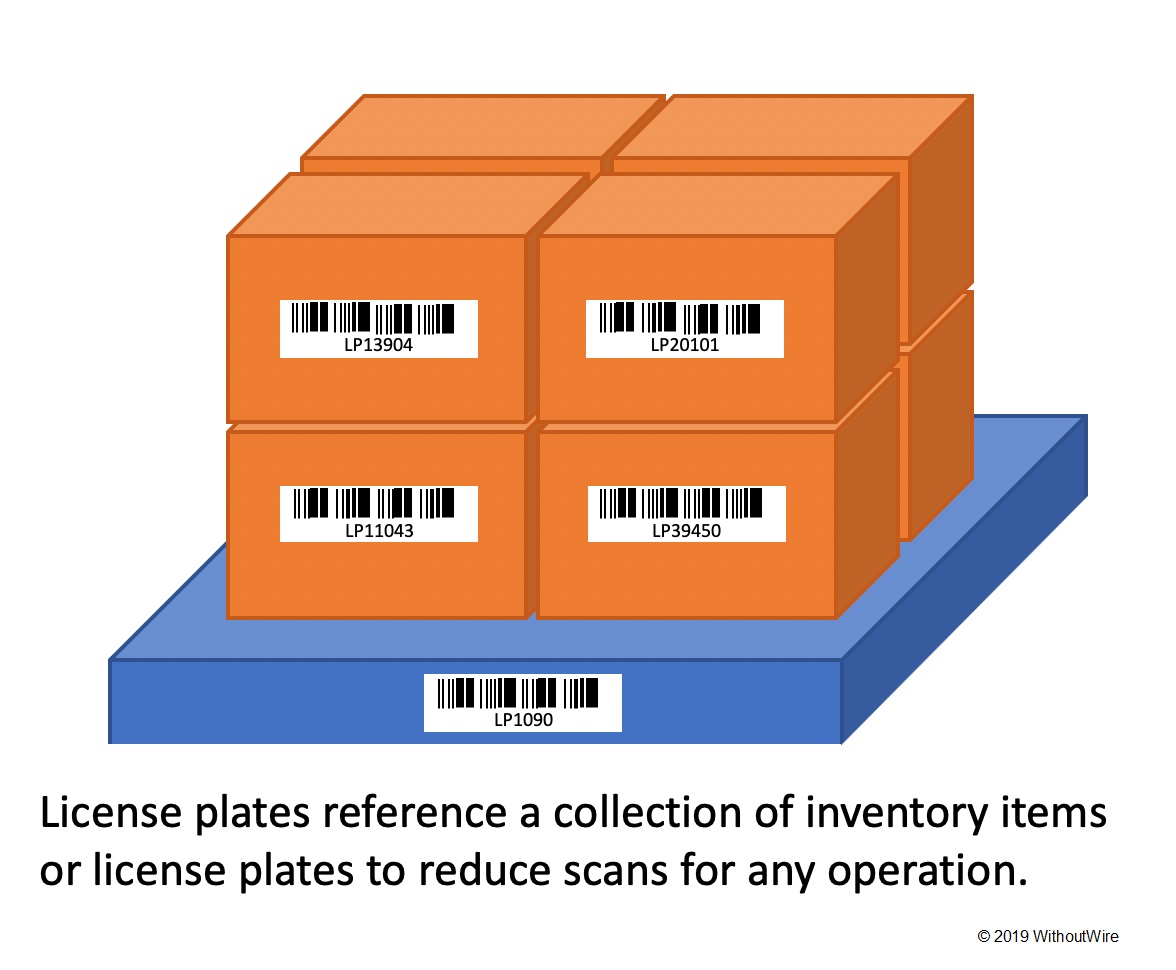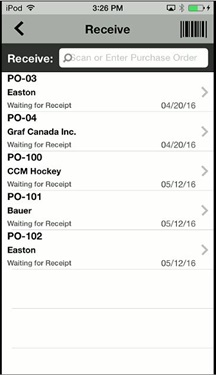
Automated Optimization Generates 77 Percent Reduction in Barcode Scans
by Travis Smith | June 11, 2019
Automation, Control & Plant Intelligence - Articles, Analysis, Reviews, Interviews & Views

by Travis Smith | June 11, 2019
 A collection of inventory items or "License Plates" reduce scans for any operation
Similarly, technology must automate and support full receiving with scanning in the field for critical part tracking, so that field replenishments can be triggered by external API calls, requests by techs, or auto-replenishment levels managed through MIN/MAX settings.
Techs report consumed and damaged parts, track returns and transfers, and improve overall visibility on the job. Customer satisfaction improves because they receive accurate visibility of serial/lot numbers using built-in validation. Using a mobile device, improves accuracy, tracking, and real-time visibility.
A collection of inventory items or "License Plates" reduce scans for any operation
Similarly, technology must automate and support full receiving with scanning in the field for critical part tracking, so that field replenishments can be triggered by external API calls, requests by techs, or auto-replenishment levels managed through MIN/MAX settings.
Techs report consumed and damaged parts, track returns and transfers, and improve overall visibility on the job. Customer satisfaction improves because they receive accurate visibility of serial/lot numbers using built-in validation. Using a mobile device, improves accuracy, tracking, and real-time visibility.
 Consumption for planned jobs and service calls
Every type of consumption within a field service supply chain must be automated with optimal efficiency considered. Automated collection of information about part consumption has a variety of important applications. Often there are planned jobs in the field with occasional needs for additional parts. Automated user interfaces (UX) have been created to suit this process.
Break/Fix scenarios can involve large quantities of various parts. The part selection process can be automated quickly. Instant access to visibility across the enterprise, ensures that users can check for good parts and request transfers from the warehouse or other techs.
Returns provide the ability to collect a group of good and bad parts and return them to a processing site. When these parts are combined with a return license plates, it makes receiving very simple.
Automated movement of parts
Field technicians are paid to do their job, not to study software manuals. Many field techs are under forty and have spent their lives using Android and iOS apps. These solutions are easy to install; with a minimal learning curve, automating, tracking, and replenishing truck inventory in real-time is now possible.
Transfer of parts is a complex aspect to handling various customer requirements. Field techs get inventory from many places; warehouses, deliveries, closet stock locations, customer staging locations, and even other techs. Using tech lockers, staged by warehouse staff for easy and secure pick up with single scan tracking, shows exactly who and when the parts were picked up.
Travis Smith is the CTO and Founder of WithoutWire Inventory Sciences. He is a graduate of NDSU school of Electrical Engineering and resides in Maple Grove, MN with his wife and 8 children. In 1998, he co-founded Inetium, a software development consulting firm and branched off to form Appolis in 2001. He provides supply chain-based
See More Details.
Consumption for planned jobs and service calls
Every type of consumption within a field service supply chain must be automated with optimal efficiency considered. Automated collection of information about part consumption has a variety of important applications. Often there are planned jobs in the field with occasional needs for additional parts. Automated user interfaces (UX) have been created to suit this process.
Break/Fix scenarios can involve large quantities of various parts. The part selection process can be automated quickly. Instant access to visibility across the enterprise, ensures that users can check for good parts and request transfers from the warehouse or other techs.
Returns provide the ability to collect a group of good and bad parts and return them to a processing site. When these parts are combined with a return license plates, it makes receiving very simple.
Automated movement of parts
Field technicians are paid to do their job, not to study software manuals. Many field techs are under forty and have spent their lives using Android and iOS apps. These solutions are easy to install; with a minimal learning curve, automating, tracking, and replenishing truck inventory in real-time is now possible.
Transfer of parts is a complex aspect to handling various customer requirements. Field techs get inventory from many places; warehouses, deliveries, closet stock locations, customer staging locations, and even other techs. Using tech lockers, staged by warehouse staff for easy and secure pick up with single scan tracking, shows exactly who and when the parts were picked up.
Travis Smith is the CTO and Founder of WithoutWire Inventory Sciences. He is a graduate of NDSU school of Electrical Engineering and resides in Maple Grove, MN with his wife and 8 children. In 1998, he co-founded Inetium, a software development consulting firm and branched off to form Appolis in 2001. He provides supply chain-based
See More Details.
YOU MAY LIKE:
Popular Articles
Manufacturing Insights